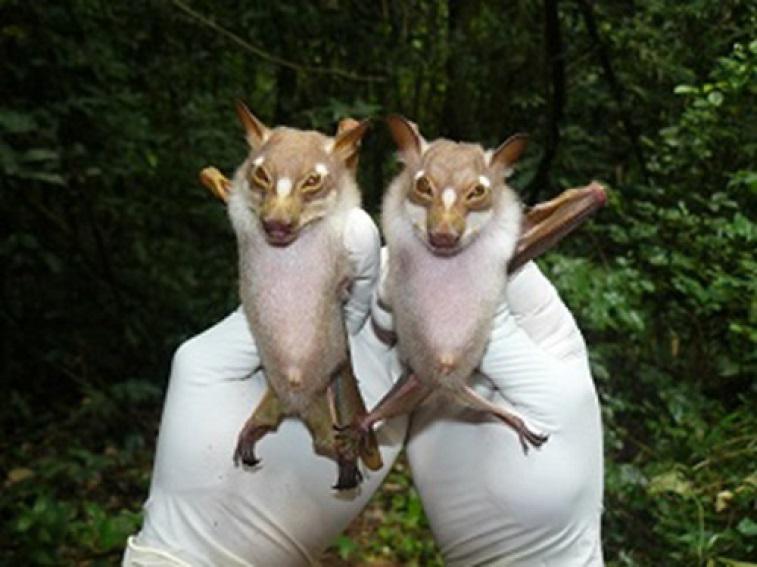Social media video featuring the project.
Batlife Ghana
The project seeks to survey the bat community at Atewa Forest Reserve with focus on Scotonycteris ophiodon, embark on conservation education, stakeholder workshop and habitat restoration activities geared towards promoting quality life for Ghanaian bats.

Scotonycteris spp - whose identity currently fit any morphometric measurement and are currently being explored genetically by our colloborators from Germany
Locally, bats have received less attention in research and conservation compared to other mammals, largely because of their nocturnal behaviour, cultural mysticism, expertise in research and funding availability. The Upper Guinean forest of Ghana is among the most important biodiversity hotspots in the world, but has hugely been devastated through human activities such as logging, farming and mining.
However, it serves as the home of numerous endemic and unique species of high conservation value. Among them is Scotonycteris ophiodon (Pohle’s fruit bat) which is known from only five countries including Ghana. In 2010, the IUCN listed it as near threatened but close to qualifying as vulnerable based on its high degree of susceptibility to habitat degradation and significant population decline. Aside habitat degradation threatening their survival, the Eastern region where this species was last recorded in Ghana is known for bats hunting and consumption, a situation demanding urgent conservation attention. To conserve this species and other bats, this project surveys for bats with focus on this species in the Atewa Forest Reserve in the Eastern Region, engages in habitat restoration, conservation education and stakeholder dialogue.
This project seeks to embark on intensive netting looking at the community of bats and not only Scotonycteris ophiodon to produce a checklist of bats inhabiting the Atewa Forest. Also, conservation education involving conservation campaigns and community video shows on bats would be carried. Project flyers and T-shirt will be printed and distributed to help in these activities. During conservation campaigns, persons who show interest in our activities would be selected to join the field survey. Through this, we hope to bring such persons closer to the bats we want to conserve to further deepen their appreciation for bats so that they can latter become ambassadors in the communities they live after the expiration of this project. We will also focus on educating school children about bats and involve them directly in bat conservation.
The project aims at creating awareness about the consequences of bat hunting while demystifying myths to ensure harmonious coexistence of humans with bats for better life for Ghanaian bats. Essentially, in executing this project, we hope to make direct contribution to nature conservation and to the protection of biological diversity.
Social media video featuring the project.
Batlife Ghana